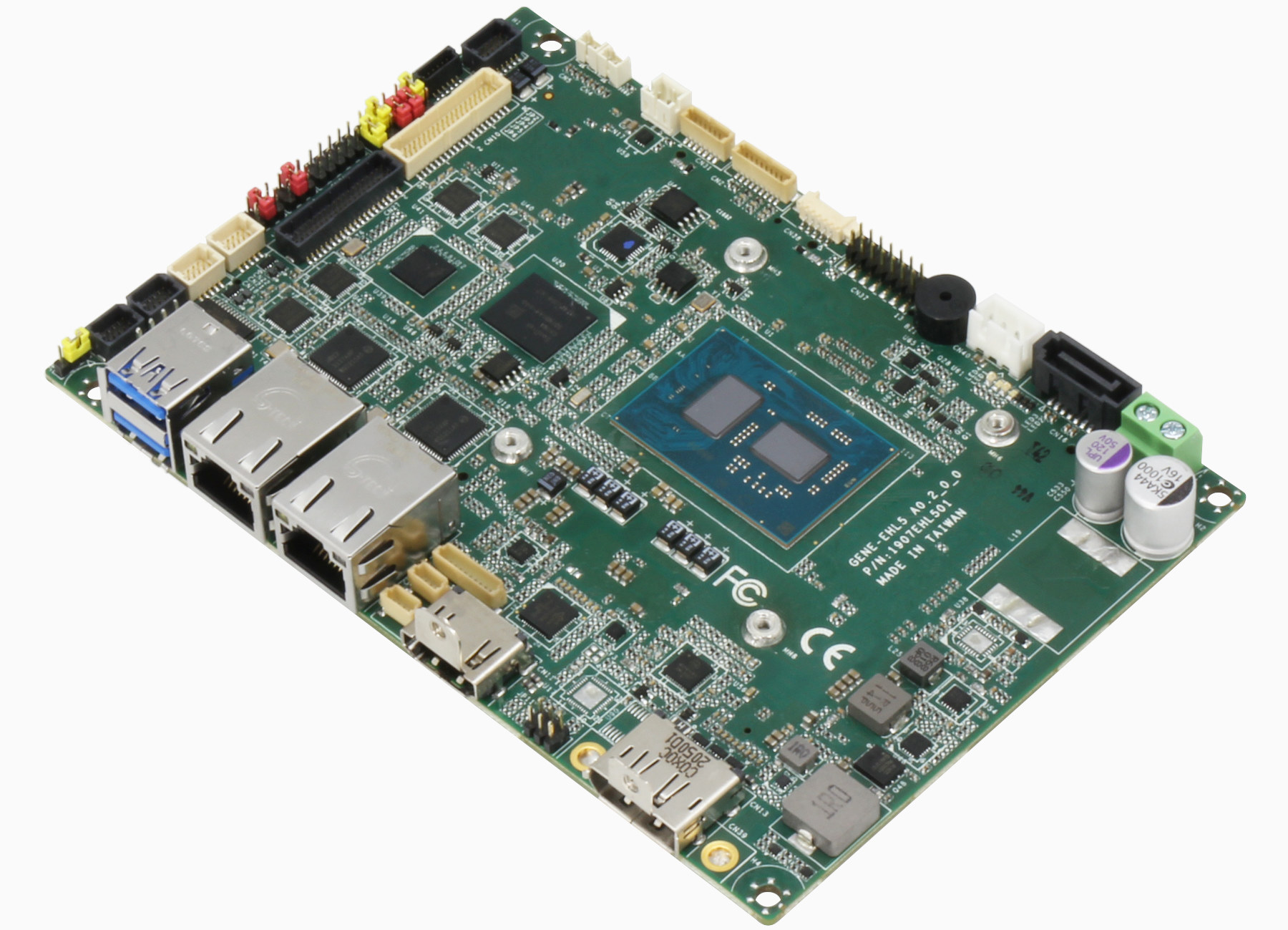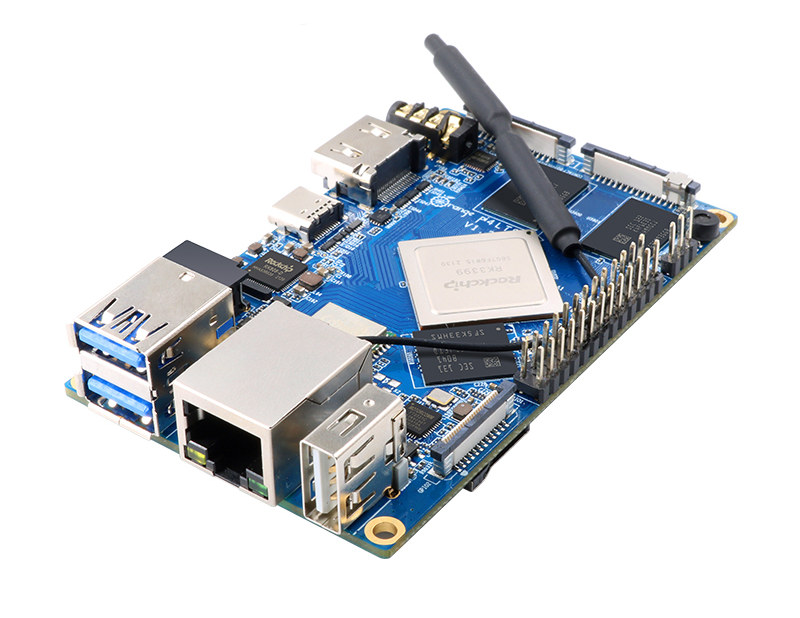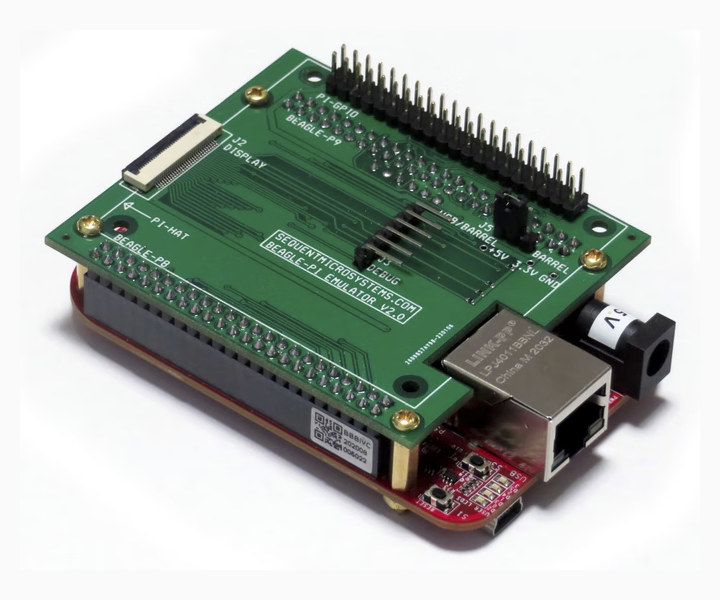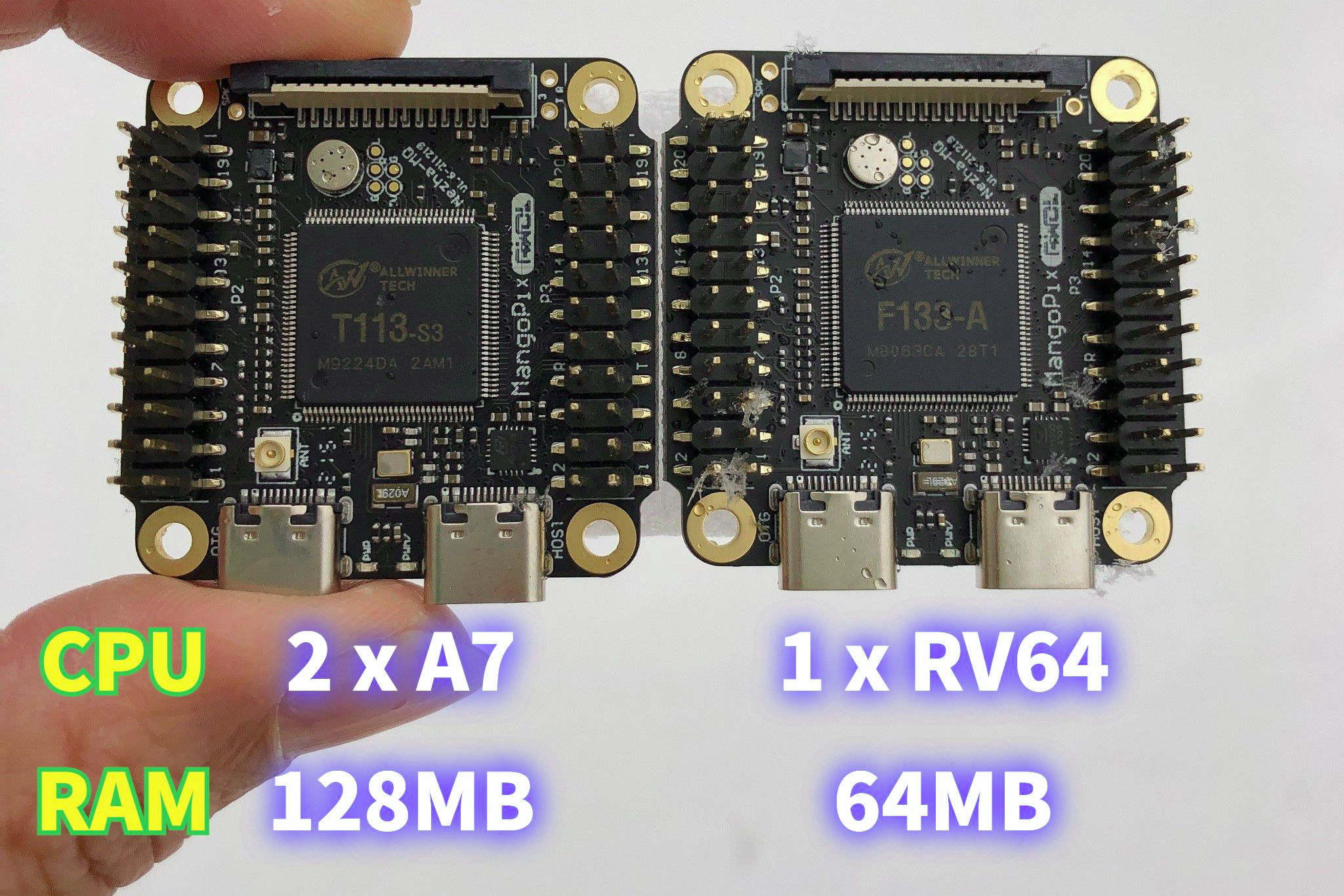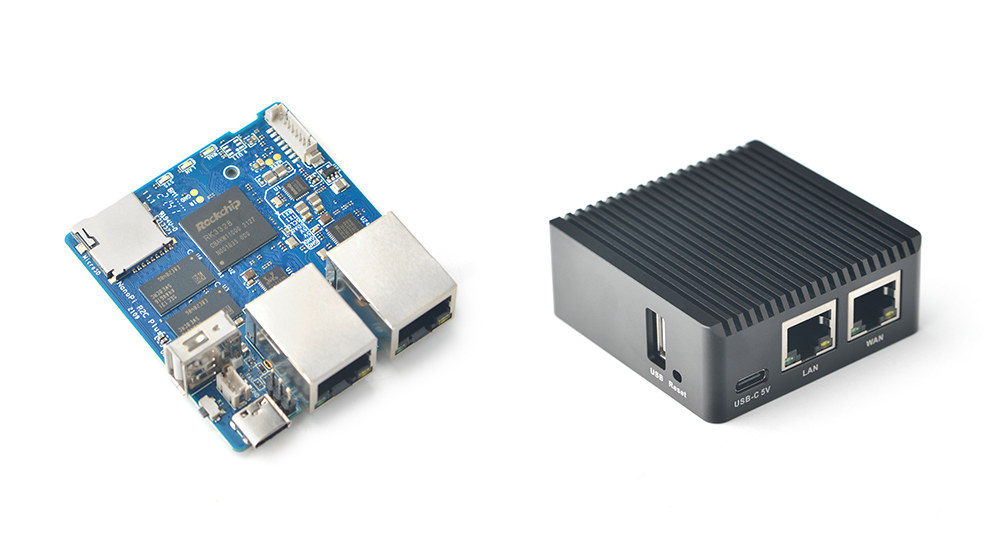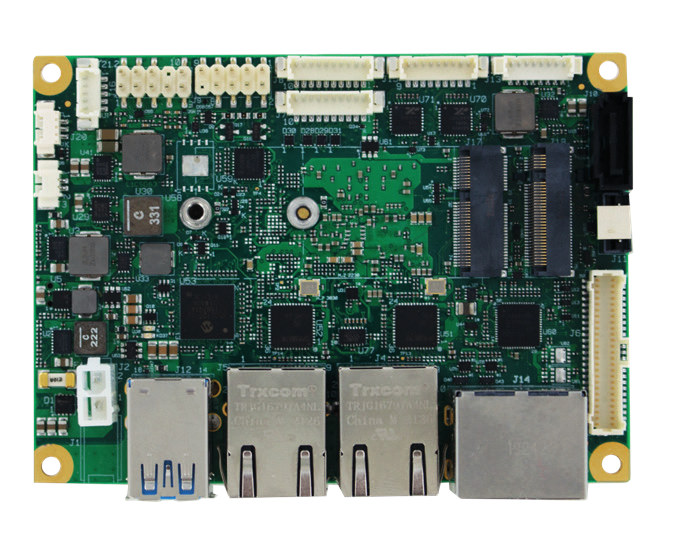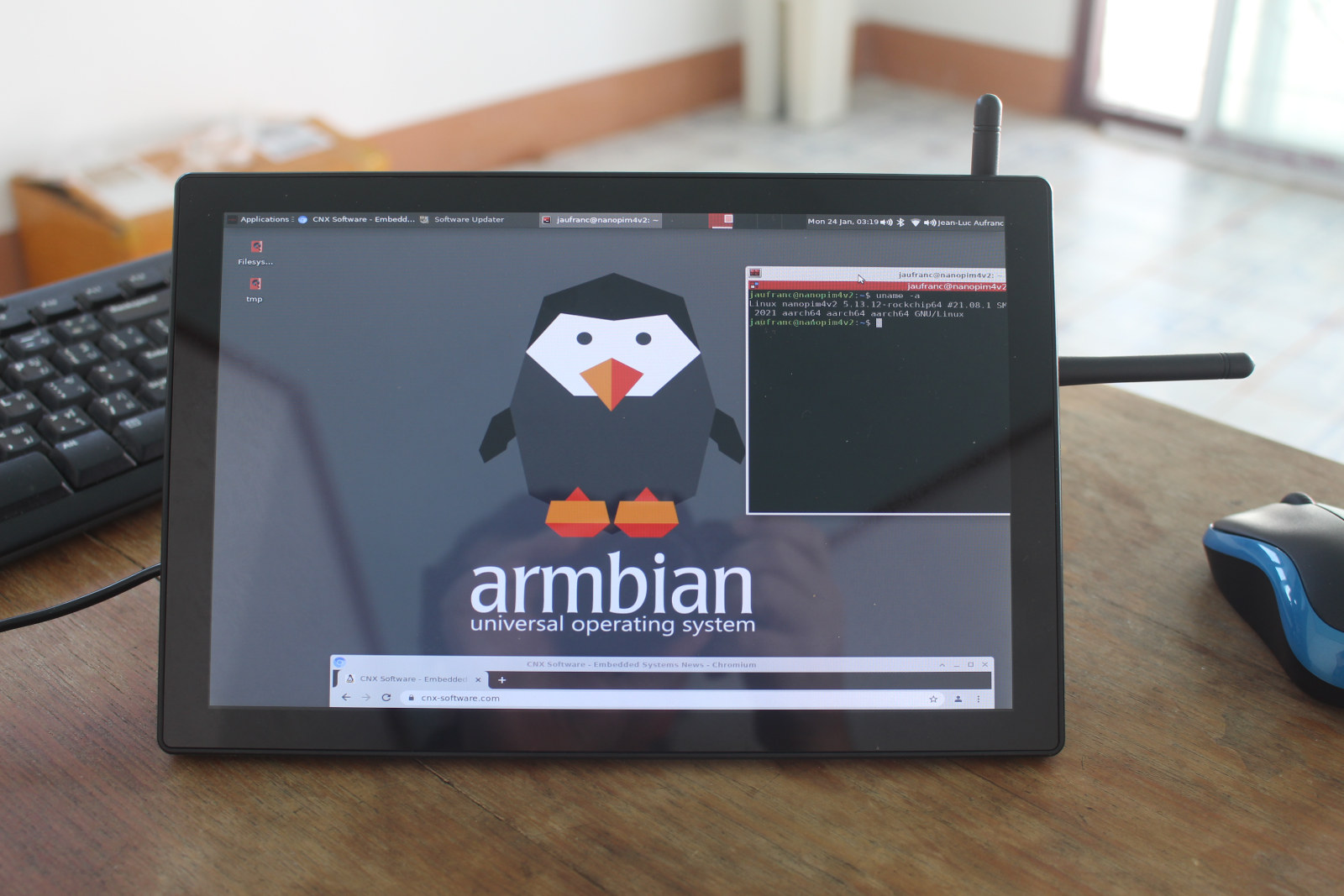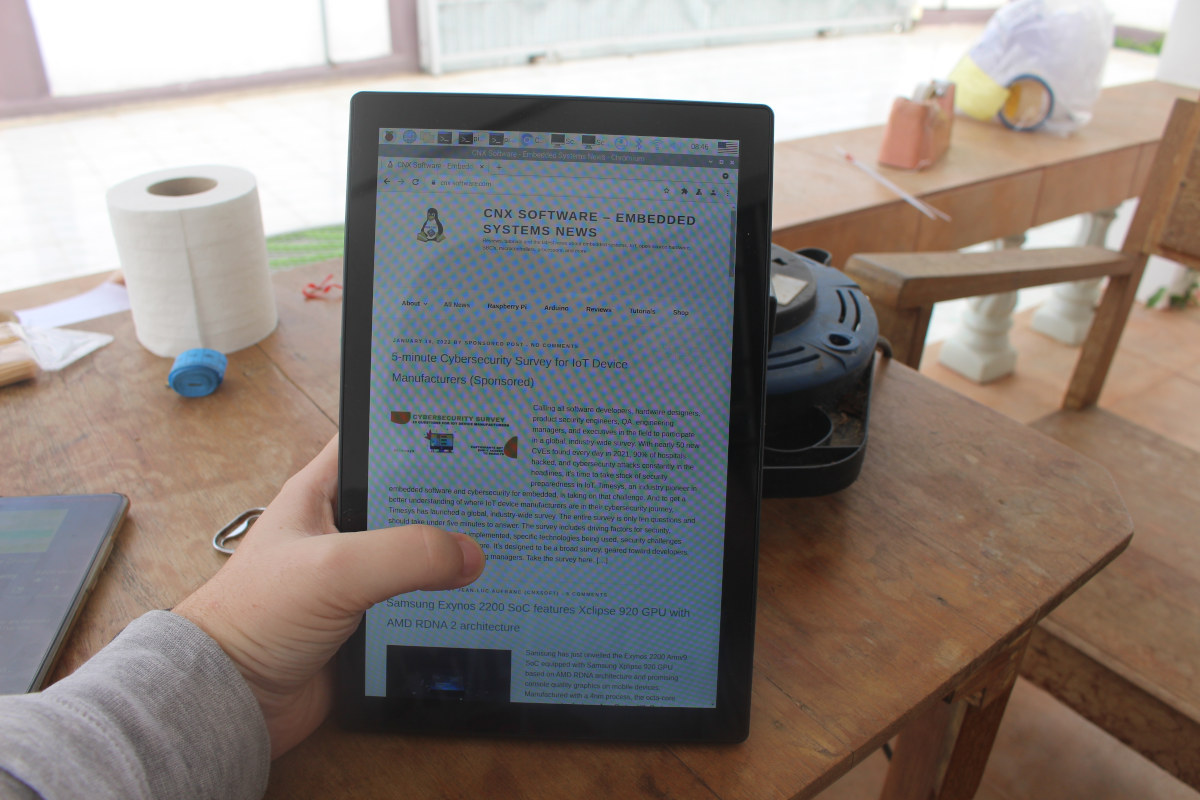AAEON GENE-EHL5 is a 3.5-inch Subcompact board based on Intel Atom x6000E Series, Pentium, and Celeron “Elkhart Lake” processors with four M.2 expansion slots for wireless connectivity (5G, WiFi, etc…) and NVMe modules, as well as two Gigabit Ethernet ports. The single board computer comes with one DDR4 SODIMM slot for up to 32GB IBECC memory, supports SATA and NVME storage, offers DisplayPort and HDMI, and eDP/LVDS video interface, as well as wide DC input from 9-36V, although there’s also a cost-down option for 12V DC input only. AAEON GENE-EHL5 specifications: Elkhart Lake SoC (one or the other) with Intel UHD graphics Intel Atom x6425RE quad-core processor @ 1.90 GHz; 12W TDP Intel Atom x6425E quad-core processor @ 2.00 GHz / 3.00 GHz (Turbo); 12W TDP Intel Atom x6211E dual-core processor @ 1.30 GHz / 3.00 GHz; 6W TDP Intel Pentium J6426 quad-core processor @ 2.00 GHz / 3.00 GHz; […]
$55+ Orange Pi 4 LTS SBC features YT8531C Ethernet PHY, CDW 20U5622-00 wireless module
Orange Pi 4 LTS is a cost-optimized (and availability-optimized) variant of the Rockchip RK3399 powered Orange Pi 4 single board computer that was introduced in 2019 with 4GB RAM for $49.90 and up. Shenzhen Xunlong Software mainly kept the same design with the cost savings involving a choice of 3GB or 4GB RAM, and the replacement of Realtek Ethernet PHY and Ampak wireless module with the equivalent MotorComm YT8531C Ethernet chip and CdTech wireless module with WiFi and Bluetooth 5.0 connectivity. Orange Pi 4 LTS specifications with changes highlighted in bold: SoC – Rockchip K3399 hexa-core big.LITTLE processor with two Arm Cortex A72 cores @ up to 1.8 GHz, four Cortex A53 cores, and an ARM Mali-T860 MP4 GPU System Memory – 3GB or 4GB LPDDR4 Storage – MicroSD card socket, optional 16 GB eMMC flash Video Output/Display Interface HDMI 2.0 up to 4K @ 60 Hz LCD connector for […]
Beagle-Pi Emulator is a Raspberry Pi HAT adapter for BeagleBone Black (Crowdfunding)
We recently reported the Raspberry Pi boards were getting really expensive due to a lack of supply, and the problem has gone on for while without a clear idea when the issue will be resolved. This does not help Raspberry Pi HAT manufacturers, and for instance, Sequent Microsystems has made Raspberry Pi HATs over the years most models with multiple relays, but also others for temperature sensors, and others automation applications. One solution would be to use compatible boards like ODROID-C4 or Rock64, but Sequent Microsystems found out the BeagleBone Black Industrial was well-stocked by various distributors, and instead, they designed the “Beagle-Pi Emulator” adapter to use Raspberry Pi HAT on the Texas Instruments Sitara AM3358 board. An adapter is needed because the BeagleBone Black boards are equipped with two 46-pin headers instead of the 40-pin header on Raspberry Pi SBC’s. The expansion board routes I2C, SPI, four serial […]
RISC-V or Arm? This tiny 4x4cm Linux board with WiFi offers both options
Last fall, we wrote about Allwinner D1s/F133-A RISC-V processor and the upcoming MangoPi MQ1, a tiny 4x4cm board based on the processor. The board is not for sale, but we have more details, and the company is also working on an Arm version equipped with Allwinner T113-S3 dual-core Cortex-A7 processor that is pin-to-pin compatible with F133-A SoC. The Allwinner F133-A board will finally be called MangoPi Nezha-MQ, or MangoPi MQ for shorts, and come with 64MB on-chip RAM while the Allwinner T113-S3 board, with 128MB on-chip RAM, will be named MangoPi MQ-Dual. Both are fitted with a Realtek RTL8189-based Wi-Fi module, offer display and camera interfaces, two USB-C interfaces, and headers for GPIOs. MangoPi MQ RISC-V or Arm Linux board MangoPi MQ/MQ-Dual specifications: SoC (one or the other) MangoPi MQ – Allwinner D1s/F133-A 64-bit RISC-V processor @ 1 GHz with 64 MB DDR2 MangoPi MQ-Dual – Allwinner T113-S3 32-bit dual-core […]
NanoPi R2C Plus dual GbE router board adds 8GB eMMC flash
NanoPi R2C Plus is a variation of NanoPi R2C dual Gigabit Ethernet SBC powered by a Rockchip RK3328 processor that adds an 8GB eMMC flash for storage and replaces a 10-pin 2.54mm pitch I/O header with an 8-pin 1.25mm pitch header. FriendlyELEC introduced the NanoPi R2C last August as a lower-cost version of NanoPi R2S replacing Realtek RTL8211E Gigabit Ethernet transceiver with a Motorcomm YT8521S chip for availability and pricing reasons. NanoPi R2C Plus is just an evolution of the original design. NanoPi R2C Plus specifications: SoC – Rockchip RK3328 quad-core Cortex-A53 @ 1.5 GHz with Arm Mali-450MP2 System Memory – 1GB DDR4 RAM Storage – 8GB eMMC 5.1 flash, MicroSD Slot, SPI flash footprint Connectivity 1x Gigabit Ethernet (WAN) up to 941 Mbps (measured) via MotorComm YT8521S Gigabit Ethernet transceiver 1x Gigabit Ethernet (LAN) up to 941 Mbps (measured) via Realtek RTL8153B USB 3.0 to Ethernet controller USB – […]
ICARUS Elkhart Lake Pico-ITX board targets IoT, AIoT, and computer vision applications
SECO ICARUS is a Pico-ITX single board computer based on Intel Atom x6000E, Celeron, and Pentium Elkhart Lake processor that’s designed for edge IoT, AIoT, and computer vision applications. The SBC ships with up to 16GB DDR4 IBECC (in-band error-correcting code) memory, eMMC flash and/or SATA storage, supports up to three independent displays, features two Gigabit Ethernet ports with TSN support, M.2 sockets for WiFi/Bluetooth and cellular connectivity, several USB ports, serial ports, and other I/O interfaces. ICARUS specifications: Elkhart Lake SoC (one or the other) with Intel Gen11 UHD Graphics Intel Celeron J6413 quad-core processor @ 1.8GHz (3GHz Turbo); 10W TDP Intel Celeron N6211 dual-core processor @ 1.2GHz (3GHz Turbo); 6.5W TDP Intel Pentium J6426 quad-core processor @ 2.0GHz (3GHz Turbo); 10W TDP Intel Pentium N6415 quad-core processor @ 1.2GHz (3GHz Turbo); 6.5W TDP Intel Atom x6211E dual-core processor @ 1.3GHz (3GHz Turbo); 6W TDP w/ IBECC and IHS […]
Building a NanoPi M4V2 based All-in-One Linux PC running Armbian (Ubuntu/Debian)
At the end of my review of “RPI All-in-One” PC with Raspberry Pi 4, I noted the system also appeared to be compatible with NanoPi M4V2 single board computer. I’ve now tried it out, and assembling the board inside the 10.1-inch display is even easier than I initially thought. That means I now have a NanoPi M4V2 All-in-One PC running Ubuntu Hirsute or Debian Buster with XFCE desktop environment from Armbian, and most features work including the display and wireless connectivity, but I still have an issue with the touchscreen function. Here are the steps I followed initially: Download Armbian Buster XFCE image from Armbian and flash it to a microSD card with tools like USBimager. Insert the microSD card in the board Install the USB Type-C and HDMI-A adapters in the display. Insert the USB Type-C and HDMI port of the NanoPi M4V2 SBC into the adapters Install the […]
10.1-inch RPI All-in-One PC review with Raspberry Pi 4
A couple of months ago I received “RPI All-in-One”, a 10.1-inch touchscreen display for Raspberry Pi boards, listed the specifications, checked out the package content, installed a Raspberry Pi 4 inside the display before booting my new all-in-one (AiO) PC successfully. I’ve now had time to spend more time with the PC/display and see how it performs under various conditions. I also tested HDMI and USB-C input features with a laptop and mini PC. Fan or fanless operation? After updating Raspberry Pi OS, I ran sbc-bench.sh script together with rpi-monitor to see how the Raspberry Pi 4 with 1GB RAM would perform under load with the (noisy) fan enabled.
|
1 2 3 4 5 6 7 8 9 10 11 12 13 14 15 16 17 18 19 20 21 22 23 24 25 26 27 28 29 30 31 32 33 34 35 36 37 38 39 40 41 42 43 44 45 46 47 |
sbc-bench v0.9.1 Installing needed tools. This may take some time. Done. Checking cpufreq OPP. Done (results will be available in 11-15 minutes). Executing tinymembench. Done. Executing OpenSSL benchmark. Done. Executing 7-zip benchmark. Done. Checking cpufreq OPP. Done (17 minutes elapsed). perl: warning: Setting locale failed. perl: warning: Please check that your locale settings: LANGUAGE = (unset), LC_ALL = (unset), LC_ADDRESS = "en_GB.UTF-8", LC_NAME = "en_GB.UTF-8", LC_MONETARY = "en_GB.UTF-8", LC_PAPER = "en_GB.UTF-8", LC_IDENTIFICATION = "en_GB.UTF-8", LC_TELEPHONE = "en_GB.UTF-8", LC_MEASUREMENT = "en_GB.UTF-8", LC_TIME = "en_GB.UTF-8", LC_NUMERIC = "en_GB.UTF-8", LANG = (unset) are supported and installed on your system. perl: warning: Falling back to the standard locale ("C"). It seems neither throttling nor frequency capping has occured. Memory performance: memcpy: 2595.9 MB/s (0.8%) memset: 3398.3 MB/s (2.7%) 7-zip total scores (3 consecutive runs): 5556,5650,5565 OpenSSL results: type 16 bytes 64 bytes 256 bytes 1024 bytes 8192 bytes 16384 bytes aes-128-cbc 61981.49k 76335.40k 82773.25k 84199.42k 84355.75k 84393.98k aes-128-cbc 62224.25k 76254.36k 82779.39k 84461.91k 84757.16k 84825.43k aes-192-cbc 55900.34k 67052.89k 71500.80k 73121.11k 73362.09k 73203.71k aes-192-cbc 55869.41k 66963.52k 71835.14k 72934.74k 73471.32k 73465.86k aes-256-cbc 50541.63k 59834.26k 63387.14k 64413.70k 64634.88k 64760.49k aes-256-cbc 50646.47k 59735.02k 63384.92k 64461.14k 64648.53k 64629.42k Full results uploaded to http://ix.io/3MfY. In case this device is not already represented in official sbc-bench results list then please consider submitting it at https://github.com/ThomasKaiser/sbc-bench/issues with this line: | RPi 4 Model B Rev 1.1 / BCM2711 rev B0 | 1500 MHz | 5.10 | Bullseye armhf | 5590 | 62100 | 64690 | 2600 | 3400 | - | [http://ix.io/3MfY](http://ix.io/3MfY) | |
No throttling was detected, and the temperature never exceeded 56°C in a room with an ambient temperature of 26°C. I then disconnect the fan, but it turns out the fan can also be easily disabled in the OSD menu […]


